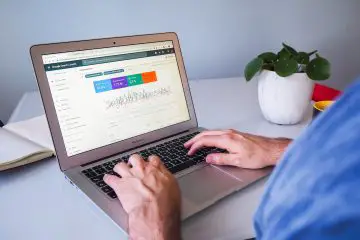If you use links and search engine optimization in one sentence, most people probably think of backlinks – i.e. external links that point to your own site. But there are also other links to consider, namely the links within a website – known as internal links.
But what is the difference between backlinks and internal links? What is the best approach to internal links in terms of SEO? And is there a tool that can be used to check or analyze internal links? In this article, we share valuable tips for your site, so that your internal links are also perfect.
The difference between backlinks and internal links
Basically, there are three types of links:
Backlinks: A page other than your own links to your domain.
Outbound links: You are linking to other URLs on your site.
Internal links: They refer to other content on your website (so-called cross-references).
The big difference lies in the properties of the links. External links (backlinks) are hard to come by because other sites need to reference and trust your site. In addition, backlinks can also disappear quickly. This is in the hands of others. Internal links, on the other hand, are 100% in your own hands, because you decide where they are placed. See it as a kind of reader guidance, because you are directing potential customers to further content or products.
Another difference lies in the internal links themselves, because there are recurring links such as in the navigation or in the footer, but also in the content, i.e. in the text itself. These are called also content links.
The best approach for internal links for SEO
In the case of internal links, think of a kind of network, because the individual websites are connected to one another by the links.
In some places, this may result in narrower or “thicker” places, which can indicate to a search engine which URLs are more important or should be weighted more heavily.
This compression occurs, for example, if you have certain target pages on a topic that are often linked. They create a thematic connection and show both the user and the search engine which content goes together. This makes it easy for anyone to navigate through the website and find or recognize relevant pages.
Internal links can push the following three points:
- Page Rank
- Context
- Ease of use
What does PageRank mean?
The Google algorithm calculates the authority of each individual website. Among other things, this authority also includes how many backlinks refer to a page. Good backlinks thus push the ranking of a website and strengthen authority. If you then link from this authoritative page to another, the authority is passed on. Internal links create authority in the sense that existing ones are passed on.
It is important to note here that internal links are not scattered arbitrarily. At best, the website structure is planned in advance. In this way, the most important nodes can be determined and less important pages can be moved down the hierarchy. Some SEO-savvy people also speak of “link juice”.
What is meant by context?
Underlined, highlighted, i.e. clickable words or phrases in the text signal to the reader that this is going to be continued. The most important thing to consider is the so-called anchor text – i.e. the words that you are actually linking. You can use this anchor text to set signals where the link leads to. So make sure that users know exactly where they are going when they click on an internal link.
Why am I increasing user-friendliness with internal links?
The most important keyword is here orientation. When it comes to internal links, think of small signposts that send readers to certain places or accompany them on their way. As a website, you can draw attention to certain content that may not appear directly in a Google search. The principle is “User First”, which you definitely follow with internal links.
Tips and tricks for internal links
- Links from the main content usually pass on more PageRank than others
- Recurring links from the footer or the navigation pass on less PageRank
- Important links should be placed higher up on the page
- The first internal link tends to be the most weight given
- Use meaningful anchor texts
- Link to the main keywords of the page you are linking to
- You should be able to answer the question “Is the internal link currently relevant for readers?” with a clear yes
- Corresponding link targets should ideally always have the same anchor text be linked
A tool to check internal links
As always, there are many tools that can be used for this. You can certainly check the internal linking structure without tools. One tool you can use, for example, is Screamingfrog. It provides some functions that can be used to find broken links, among other things.







